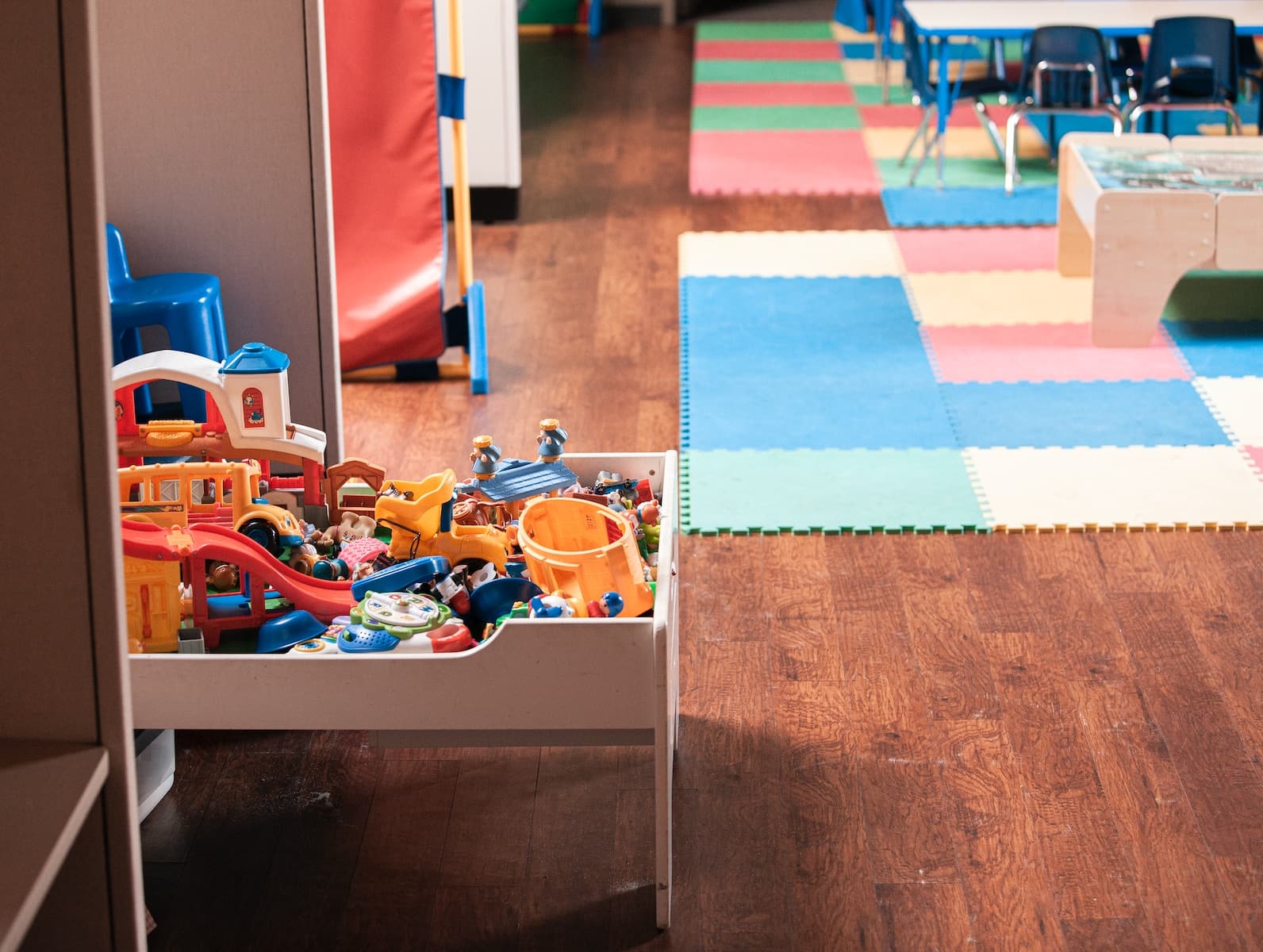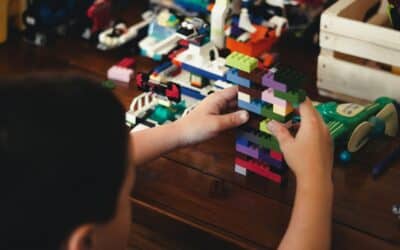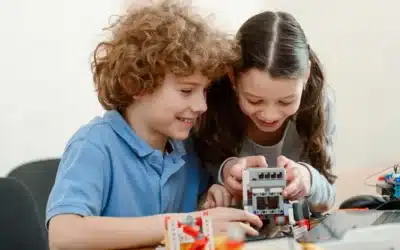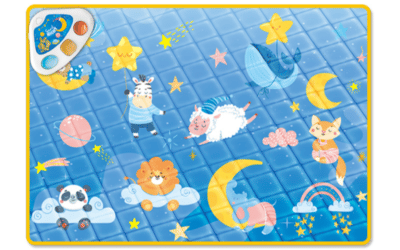Zawartość
Wprowadzenie:
In the rapidly evolving landscape of education and technology, integrating STEM (Science, Technology, Engineering, and Mathematics) concepts in early childhood is more crucial than ever.
This foundational approach aligns with young learners’ natural curiosity and sets the stage for a lifetime of exploration and innovation. Early STEM education is pivotal in developing critical thinking, problem-solving skills, and a deep understanding of the world’s workings.
Exposing children to STEM concepts at a young age prepares them for academic success and a future where these disciplines will be increasingly relevant. This introduction will explore why early STEM education is essential and how it can be effectively incorporated into the daily lives of young learners, fostering a sense of wonder and a passion for discovery.

Exploring the Natural World: STEM and Nature
Engaging with Nature for STEM Learning
Children can explore foundational STEM concepts through direct engagement with nature. Observing weather patterns, examining plant and animal life, and exploring local ecosystems provide real-world experiences that spark curiosity and scientific inquiry.
Practical Nature-Based STEM Activities
Hands-on experiences, such as planting gardens or constructing with natural materials, offer insights into biology, ecology, and environmental science. These activities make STEM concepts tangible and promote critical thinking and problem-solving skills.

Asking the Right Questions: Fostering Curiosity
Encouraging Inquisitive Thinking in STEM
A key element in early STEM education is encouraging children to ask questions. Open-ended inquiries, such as “What would happen if…?” or “What do you think causes…?,” stimulate curiosity and foster a mindset of eksploracja i odkrywanie. These questions challenge młode umysły to think creatively and explore the possibilities beyond the obvious.
The Power of ‘What If’ in Learning
Encouraging children to ask ‘what if’ questions allows them to envision different scenarios and outcomes. This approach enhances their creative thinking and builds confidence in their ability to understand and analyze the world around them. In contrast to more direct questions that might have a single correct answer, ‘what if’ questions open a world of endless possibilities, making learning a more engaging and dynamic experience.
Everyday STEM: Integrating Learning with Daily Life
Making STEM Relatable Through Daily Activities
Incorporating STEM into daily life makes learning relevant and accessible for young children. By connecting STEM concepts to everyday experiences, children can see the practical application of what they learn, enhancing their understanding and interest.
Practical Examples of Everyday STEM
Simple activities like cooking, which involves measurements and chemical reactions, or building with blocks, which introduces basic engineering principles, are excellent examples of how STEM can be part of everyday life. Discussing how things work, like the mechanics of a bicycle or the process of plant growth, turns routine observations into educational moments.
By integrating STEM into the routine, children develop a natural affinity for these subjects, seeing them not as abstract concepts but as integral parts of their world.

Hands-On Learning: Interactive STEM Activities
Engaging Young Minds Through Active Participation
Interactive STEM activities provide a hands-on approach to learning, which is crucial for young children. Engaging in activities that require physical involvement, such as building, experimenting, or exploring, helps solidify complex concepts tangibly and memorably.
Examples of Interactive STEM Activities
Activities like constructing simple machines, conducting basic dom experiments, or using technology in creative projects are great ways to involve children actively in STEM learning. These experiences are educational and immensely enjoyable, fostering a love for learning and discovery.
Hands-on STEM activities are vital in cementing knowledge and skills that children acquire through more traditional learning methods. They offer an experiential learning component essential for a well-rounded understanding of STEM disciplines.

Balancing Technology in Early STEM Education
In the digital age, it’s crucial to balance technology use with traditional learning methods in early STEM education. Introducing młodzi uczniowie to technology should be done thoughtfully, ensuring it complements rather than replaces hands-on, experiential learning.
Age-Appropriate Digital Tools and Resources
Selecting age-appropriate digital tools is key. For younger children, this might include simple coding games or interactive educational apps that introduce basic STEM concepts. For older children, more advanced software or programmable zestawy do robotyki can provide deeper insights into technology and its applications.
Navigating the digital world responsibly is essential in early STEM education. It’s about leveraging technology to enhance learning while ensuring it remains a tool for development, not a distraction.

Wnioski:
The journey through early STEM education is not just about acquiring knowledge; it’s about shaping tomorrow’s innovators and problem solvers. Introducing STEM concepts in a child’s early years lays a foundation for continuous curiosity, critical thinking, and a deep-seated appreciation for how the world works.
Summarizing the Lifelong Benefits of Early STEM Education
Engagement in STEM from a young age fosters a lifelong passion for learning and discovery. It equips children with the skills to navigate and succeed in an increasingly complex and technology-driven world.
Encouraging Continued Exploration and Learning
Our role as educators, parents, and guardians is to nurture this early interest and provide opportunities for children to explore, experiment, and question. The goal is to cultivate knowledge, a mindset of innovation, and a spirit of inquiry that lasts a lifetime.
FAQ
How do I choose the right STEM toy for my child’s age?
Selecting the right STEM toy matches your child’s developmental needs and engages them. For toddlers, look for toys that build basic motor skills and playfully introduce simple STEM concepts.
As children grow older, around ages 4-7, focus on toys that challenge their growing cognitive abilities, like basic robotics kits or simple science experiments. For children over 8, consider advanced sets that require more complex problem-solving, like intricate building sets or coding toys. Choosing challenging but not frustrating toys is important to maintain a balance between learning and play.
What should I consider based on my child’s interests in STEM toys?
When selecting Zabawki STEM based on interests, observe what naturally draws your child’s attention. If they show curiosity about how things work, mechanical building sets or electronics kits could be engaging.
If they are fascinated by nature, consider environmental science kits or astronomy tools like telescopes. Coding toys or game-based learning platforms can be ideal for kids interested in computers or video games. The key is to choose toys that align with their current passions while gently introducing new concepts and challenges.
How can STEM toys aid in my child’s overall development?
Zabawki STEM play a multifaceted role in a child’s development. They enhance cognitive skills like logical reasoning, problem-solving, and analytical thinking, which are fundamental for academic success and everyday decision-making.
These toys also develop fine motor skills through hands-on activities that require precision and coordination. Moreover, STEM toys can boost social skills and teamwork, especially when children work together on projects or solve problems collectively. Emotional development is also fostered as children learn patience, perseverance, and resilience through trial and error in their STEM explorations.
Are there specific STEM toys recommended for different age groups?
Yes, there are Zabawki STEM specifically designed for different developmental stages. For ages 3-5, toys that focus on simple construction, basic puzzles, and introductory science experiments are suitable.
Ages 6-8 can handle complex building sets, basic robotics, and introductory coding toys. For ages 9 and above, advanced robotics, complex engineering projects, and detailed scientific experiments provide appropriate challenges. The key is to ensure that the toys match the child’s cognitive and motor skills while still pushing their boundaries for growth.
How do STEM toys integrate with traditional education?
STEM toys are a practical extension of traditional education, bridging the gap between textbook learning and real-world application. They provide hands-on experiences that make abstract concepts tangible, thus enhancing understanding and retention. In subjects like mathematics and science, these toys allow children to experiment with and observe the principles they learn about in class, reinforcing their learning.
Furthermore, they encourage independent inquiry and research skills, which are valuable in the classroom and beyond. Zabawki STEM also often include collaborative aspects, promoting skills like teamwork and communication, which are essential in modern educational settings.





0 komentarzy